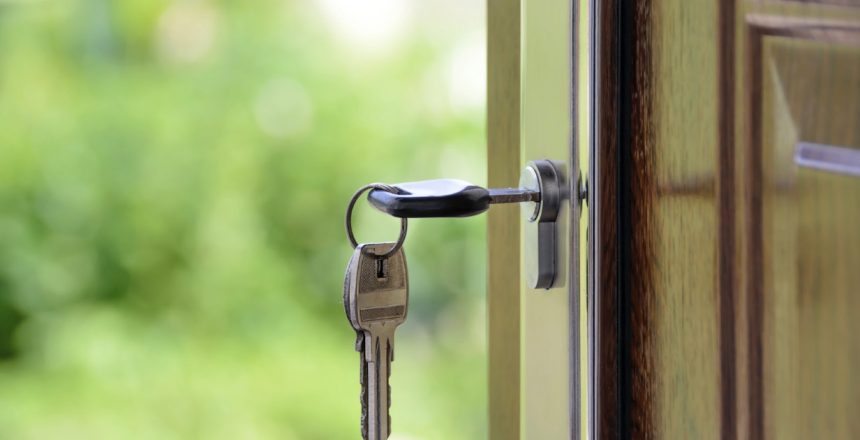Welcome to Your New Beginning!
Embarking on the journey of renting your first apartment is both exciting and daunting. This comprehensive checklist is designed to guide you seamlessly through the process, ensuring that you don’t miss any crucial steps along the way. Whether you’re moving out of your parents’ house, leaving the dorms, or just stepping into the world of independent living, this guide is your go-to resource.
But why trust this checklist? Because it’s compiled from the collective wisdom of seasoned renters, property managers, and moving experts. It’s more than just a list; it’s a roadmap to setting up your new home efficiently and comfortably.
In this guide, you’ll find everything from essential items to buy, to understanding lease agreements, to tips for living comfortably in your new space. Let’s get started!
Quick Tips for First Time Renters
Navigating Your First Lease with Confidence
Understanding your lease agreement is crucial. It’s not just about the rent amount; look for clauses related to maintenance responsibilities, rules about subletting, and lease termination conditions. Don’t hesitate to ask questions or seek clarification on any terms that seem unclear.
Budgeting Beyond Rent
Remember, your budget should cover more than just rent. Utilities, internet, groceries, and an emergency fund for unexpected expenses are key components of a well-rounded renter’s budget. Plan ahead to avoid any financial surprises.
Inspecting Your New Space
Before you sign the lease, inspect the apartment thoroughly. Check faucets, appliances, windows, and even cell phone reception in different rooms. Make a note of any damages or issues and discuss them with your landlord to ensure they’re addressed.
Know Your Neighborhood
Take the time to research your new neighborhood. Look for amenities that matter to you, assess the safety of the area, and consider the convenience of having shops, parks, and transportation options nearby.
How to Use this Checklist
Customize to Fit Your Needs
Feel free to tweak this checklist. Add items that you find necessary and skip those that don’t apply to your situation. This list is a starting point, designed to be adapted to fit your unique needs.
Stay Flexible and Update Regularly
Your needs may change as you settle into your new apartment, so keep this checklist handy and update it as you go. It’s a living document that can help you navigate the first few months in your new home and beyond.
New Apartment Essential Paperwork
When moving into a new apartment, handling the essential paperwork is crucial. This section will guide you through the key documents you’ll need to secure and understand.
Lease Agreement: Understanding Your Lease is Key
Your lease agreement is the legal document that outlines the terms and conditions of your rental arrangement. It’s crucial to read and understand every part of this agreement. Key points to look for include:
- Duration of the Lease: How long is the lease for, and what are the terms for renewal or early termination?
- Rent Details: When is rent due, and what are the penalties for late payments?
- Maintenance and Repairs: Who is responsible for maintenance and repairs?
- Rules and Regulations: Are there any specific rules, like noise restrictions or pet policies?
Ensure you understand each clause, and don’t hesitate to ask your landlord for
Renters Insurance: Protecting Your Belongings
Renters insurance is often overlooked but is an essential part of safeguarding your belongings. It protects against losses to personal property due to theft, fire, or other damages. Additionally, it can provide liability coverage in case someone is injured in your apartment. When choosing a renters insurance policy, consider:
- Coverage Amount: Ensure the policy covers the total value of your belongings.
- Deductibles: Understand the out-of-pocket cost before the insurance kicks in.
- Additional Living Expenses: Some policies cover costs if your apartment becomes uninhabitable due to a covered loss.
Utility Set-Up Confirmation: Ensuring Your Utilities Are Ready
Before moving into your new apartment, confirm that all necessary utilities are set up and in your name. This includes electricity, gas, water, and internet services. Make sure to:
- Contact Utility Companies Early: Reach out to utility providers at least two weeks before your move-in date.
- Understand Your Billing Cycle: Know when bills are due and what the average monthly cost is expected to be.
- Keep Records: Retain confirmation emails or letters as proof of service setup.
Handling these essential paperwork items ahead of time will ensure a smoother transition into your new apartment and help avoid any last-minute hassles.
New Apartment Checklist
Bedroom Basics
Bed (Frame, Mattress, Linens)
- Frame and Mattress: Choose a bed frame and mattress that fits the space and provides the comfort you need.
- Linens: Invest in quality bed linens, including sheets, pillows, and a comforter or duvet.
Wardrobe or Closet Organizers
- Maximize Storage: Use organizers like shelves, drawers, or hanging solutions to maximize closet space.
- Keep it Tidy: Arrange your clothing and accessories for easy access and visibility.
Window Treatments
- Privacy and Light Control: Opt for curtains or blinds that provide privacy and allow you to control the amount of light in your room.
- Style Match: Choose window treatments that complement your bedroom’s color scheme and decor.
Living Room Must-Haves
Sofa or Comfortable Seating
- Comfort is Key: A comfortable sofa or chairs are essential for relaxation.
- Space Planning: Make sure your seating fits well in the space and allows for easy movement around the room.
Coffee Table and Side Tables
- Functionality: Tables should be practical, providing space for drinks, books, or decorative items.
- Style and Size: Ensure they match your living room’s aesthetic and fit comfortably within the space.
Lighting Solutions (Lamps, Overhead Lights)
- Layered Lighting: Combine overhead lighting with floor or table lamps to create a warm and inviting atmosphere.
- Function and Style: Choose lighting that is both functional and fits the style of your living room.
Kitchen Essentials
Cookware and Tools
- Basic Cookware: Include pots, pans, and baking sheets for various cooking needs.
- Utensils and Tools: Stock up on essential utensils, knives, and a cutting board for meal prep.
Appliances
- Microwave: A must-have for quick heating and cooking.
- Toaster and Coffee Maker: Essential for breakfast preparation.
Storage and Organization
- Food Storage Containers: Keep your food fresh and organized.
- Spice Rack: Organize your spices for easy access while cooking.
Click here to get an instant quote from Mercury Auto Transport and see how we can help you safely and securely transport your car to your destination.
Bathroom Necessities
Shower Curtain and Liner
- Waterproof Liner: To keep water in the shower area.
- Curtain Style: Choose a curtain that matches your bathroom decor.
Bath Towels, Hand Towels, Washcloths
- Quality Towels: Invest in soft, absorbent towels for comfort.
- Color Coordination: Match your towels with the overall color scheme of your bathroom.
Toiletries Organizer
- Keep Essentials Accessible: Organize your toiletries for easy access and a clutter-free countertop.
Dining Area
Dining Table and Chairs
- Space Appropriate: Ensure the table and chairs fit your dining space comfortably.
- Style Match: Choose a set that complements the style of your apartment.
Dinnerware Set
- Essential Pieces: Include plates, bowls, and cups suitable for daily use.
- Design and Durability: Select a set that is both stylish and durable.
Eating Utensils
- Variety: Stock up on spoons, forks, knives, and serving utensils.
- Quality: Choose utensils that are comfortable to use and easy to clean.
Cleaning Supplies
Vacuum Cleaner or Broom
- Floor Cleaning: Choose based on your apartment’s flooring type.
Mop and Bucket
- For Thorough Cleaning: Essential for keeping hard floors clean.
Cleaning Products and Wipes
- Variety of Cleaners: Include multi-surface cleaners, glass cleaners, and disinfectant wipes.
Home Safety
Smoke Detector
- Fire Safety: Ensure there’s a working smoke detector in your apartment.
Carbon Monoxide Detector
- Prevent Poisoning: Especially important if you have gas appliances.
Basic Tool Kit
- For Minor Repairs: Include basic tools like a hammer, screwdrivers, and pliers.
Personal Touches
Decorative Items (Cushions, Vases)
- Personalize Your Space: Use decorative items to add color and personality to your apartment.
Wall Art and Mirrors
- Enhance the Decor: Choose art and mirrors that reflect your style and make the space feel larger.
Indoor Plants
- Bring in Nature: Plants can improve air quality and add life to your apartment.
7 Tips for Personalizing and Organizing Your Own Space
Creating a space that feels both personal and well-organized is key to making your apartment truly feel like home. Here are seven tips to help you achieve this:
- Define Your Style: Start by identifying your personal style. Are you more minimalist, bohemian, modern, or rustic? This will guide your choices in decor and organization.
- Use Color Wisely: Incorporate your favorite colors through accent pieces like cushions, rugs, and art. Color can influence the mood of your space.
- Maximize Space with Smart Storage: Invest in furniture that doubles as storage, like ottomans with compartments or beds with drawers underneath.
- Create a Focal Point: Each room should have a focal point, whether it’s an art piece, a piece of furniture, or a unique decor item.
- Play with Lighting: Layer different lighting sources to add depth and warmth to your rooms. Use a mix of overhead, ambient, and task lighting.
- Incorporate Plants: Plants not only purify the air but also add life and color to your space. Choose low-maintenance indoor plants if you’re not a green thumb.
Personalize with Photos and Memories: Display photos, keepsakes, and items that have personal significance to you. They’ll add a unique and personal touch to your space.
Ways to Save Money on Your Move
Moving a mobile home can be a significant financial undertaking, but there are ways to mitigate these costs. Here are some strategies to help save money during your move.
Timing Your Move
- Off-Peak Seasons: Consider moving during off-peak seasons. Demand for movers is typically lower in late fall and winter, which could lead to lower prices.
- Flexible Scheduling: If you can be flexible with your moving date, you might be able to take advantage of last-minute deals or cancellations, potentially saving money.
7 Insider Tips
- Get Multiple Quotes: Shop around and get quotes from various moving companies to ensure you’re getting a fair price.
- Negotiate with Movers: Don’t be afraid to negotiate. Some companies may be willing to match or beat their competitors’ prices.
- Declutter: The less you have to move, the cheaper it will be. Consider selling or donating items that you no longer need.
- DIY What You Can: Handling some aspects of the move yourself, like packing and preparing the home, can reduce labor costs.
- Check for Discounts: Ask moving companies about any discounts for which you might qualify, such as military or senior discounts.
- Understand the Full Cost: Make sure you’re aware of all potential fees and charges to avoid surprises.
- Insurance Check: Ensure your existing insurance covers the move; if not, compare prices for moving insurance to get the best deal.
How to Save Money on Apartment Necessities
Furnishing and equipping an apartment can be expensive, but there are strategies to help you save money while still getting what you need.
Shopping Tips
- Set a Budget: Before you start shopping, know how much you can afford to spend. This will help you prioritize your purchases and avoid overspending.
- Buy Second-Hand: Check out thrift stores, garage sales, and online marketplaces for gently used items at a fraction of the cost.
- Wait for Sales: Big-ticket items like furniture and appliances often go on sale during certain times of the year, like Black Friday or end-of-season clearance events.
- Compare Prices: Don’t buy the first thing you see. Take the time to compare prices online and in different stores to find the best deals.
- DIY When Possible: Consider DIY projects for things like decor or simple furniture pieces. There are plenty of tutorials online that can guide you.
- Invest in Key Pieces: It’s worth spending a bit more on items you’ll use every day, like a good mattress or a comfortable couch.
- Be Resourceful: Ask family and friends if they have items they no longer need. You’d be surprised at what people are willing to give away or sell for a low price.
Conclusion
Setting up a new apartment is an exciting journey of making a space truly your own. With this comprehensive checklist and tips, you’re now equipped to create a comfortable, functional, and personalized home. Remember, the key is to take it one step at a time and enjoy the process of turning your new apartment into a place that reflects your style and meets your needs.
Frequently Asked Questions About New Apartment Checklist
What should I set up first in my new apartment?
Prioritize setting up your bed and basic kitchen essentials first. Having a place to sleep and the ability to prepare simple meals will make the rest of the moving process more comfortable.
What brings good luck to a new apartment?
Common good luck traditions for a new apartment include hanging a horseshoe over the door, placing a potted plant near the entrance, or sprinkling salt and rice across the threshold to attract prosperity and repel negativity.
What should I do the first week in a new apartment?
In the first week, focus on unpacking essential items, setting up utilities, and familiarizing yourself with the neighborhood. It’s also a good time to start establishing a routine and making the space feel like home.
Which room to decorate first in a new house?
Start with the room you’ll use most, often the bedroom or living room. This allows you to create a comfortable, functional space to relax in as you continue setting up the rest of your home.
What should I bring to my new house for the first night?
Bring essentials like toiletries, a change of clothes, basic bedding, snacks, and a few kitchen items like a kettle or a pot. This will help you get through the first night comfortably before everything is fully unpacked.
Let Us Handle Your Auto Transport Needs
Mercury Auto Transport is an auto transport broker that presents offers from FMCSA (Federal Motor Carrier and Safety Administration) licensed and insured carriers. We have access to a wide range of car transporters through National Dispatch Boards, and together with you, we can often strategize and negotiate far better rates.
Get a free quote today or speak with one of our professional auto transport representatives and experience seamless and reliable auto transport services.






